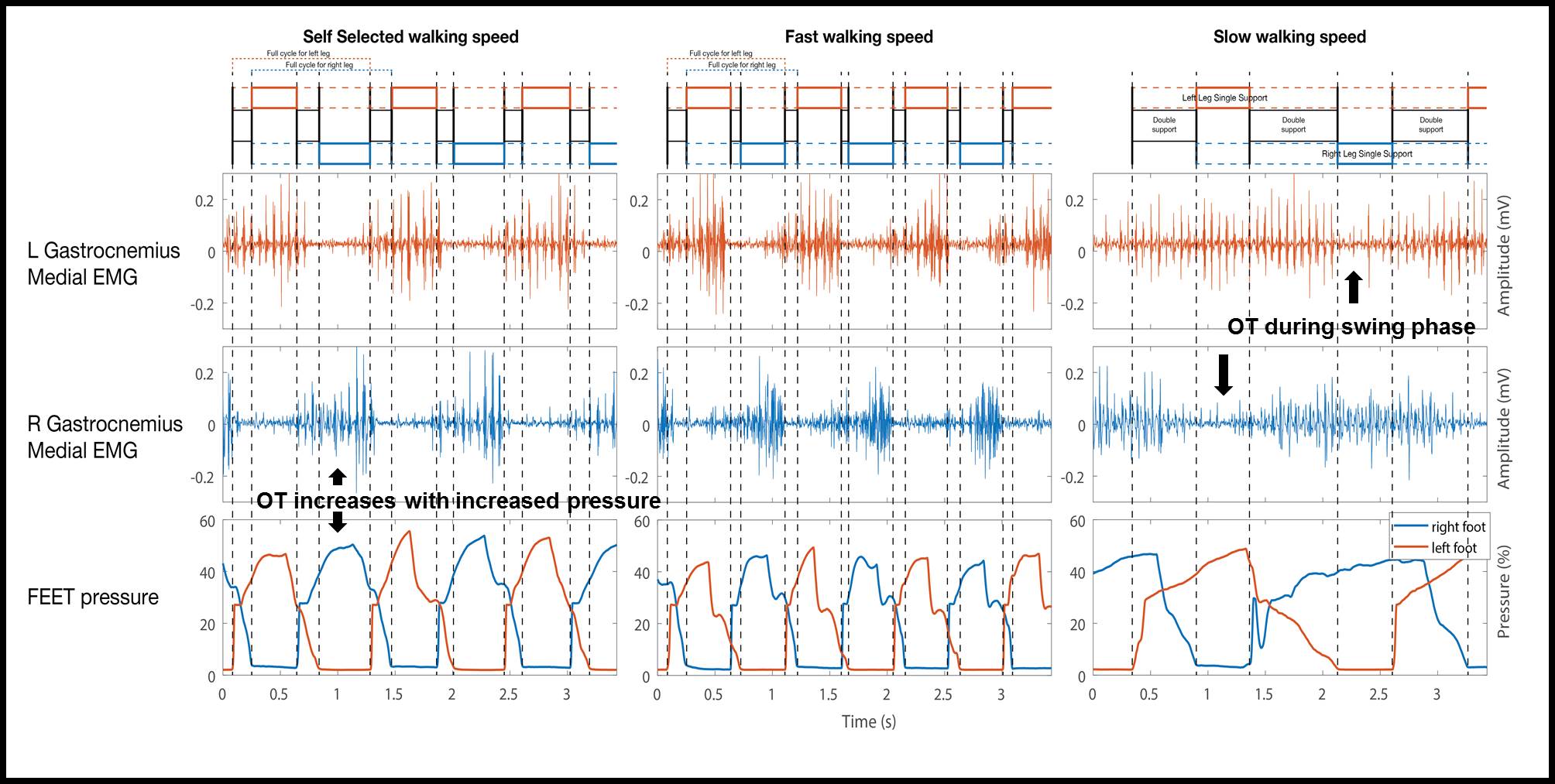Session Information
Date: Sunday, October 7, 2018
Session Title: Tremor
Session Time: 1:45pm-3:15pm
Location: Hall 3FG
Objective: To determine the electrophysiological characteristics of tremor and correlate with gait assessment in patients with OT.
Background: Orthostatic Tremor (OT) is a rare 13-18 Hz tremor disorder affecting the legs that presents as an unsteadiness sensation noted during standing position. These tremors are considered to disappear or significantly improve during walking. Few patients complain of unsteadiness persistent during walking. No study to date has reported the electrophysiological characteristics of gait in OT.
Methods: We recorded tremor and gait characteristics of OT patients presenting to our center. Gait parameters were recorded with the zeno walkway system and in three patients, the walking task was synchronized with the Delsys trigno EMG system and pressure sensors applied to the sole of the feet. Walking at self-selected habitual speed was compared with slow and fast walking.
Results: 12 patients participated in the study (mean age 72.1±7.7 years; 4M, 7F; mean disease duration 14.2±9.9, range 4-42 years, frequency range 14-16 Hz). Clinically the standing time felt to be comfortable was 76 ± 55.4 seconds (range 11-256), however the latency time for tremor on EMG was 216.7±157.2 milli seconds (range 50-500ms). 8/12 participants endorsed unsteadiness during walking at routine speed and slow walking was felt to be very difficult by all patients. For all participants, OT remained persistent on EMG during walking-in-place task, mainly in the weight-bearing leg and when they walked on the zeno walkway gait recording system, a pattern of reduced step length, increased stride width, reduced single support % time and increased double support % time was observed. Tremor was found to increase when increased pressure was applied to the weight-bearing leg recorded in 3/12 patients however in the slow walking task, mild OT remained persistent for two patients even in the swing phase (in the non-weight bearing leg).
Conclusions: Persistence of tremor especially during slow walking likely explains the gait related unsteadiness symptoms. An increased stride width, reduced single support and increased double support time are likely compensatory features. Although isometric contraction is important, tremor present during the swing phase suggests additional factors also contribute to the pathogenesis of OT. Gait in OT requires further research for an improved understanding.
To cite this abstract in AMA style:
W. Hu, E. Opri, Z. Jabarkheel, A. Schmitt, C. Hass, C. Hess, M. Okun, A. Wagle Shukla. Orthostatic tremor does not stop during walking: Is this a stop sign for research? [abstract]. Mov Disord. 2018; 33 (suppl 2). https://www.mdsabstracts.org/abstract/orthostatic-tremor-does-not-stop-during-walking-is-this-a-stop-sign-for-research/. Accessed December 23, 2025.« Back to 2018 International Congress
MDS Abstracts - https://www.mdsabstracts.org/abstract/orthostatic-tremor-does-not-stop-during-walking-is-this-a-stop-sign-for-research/

